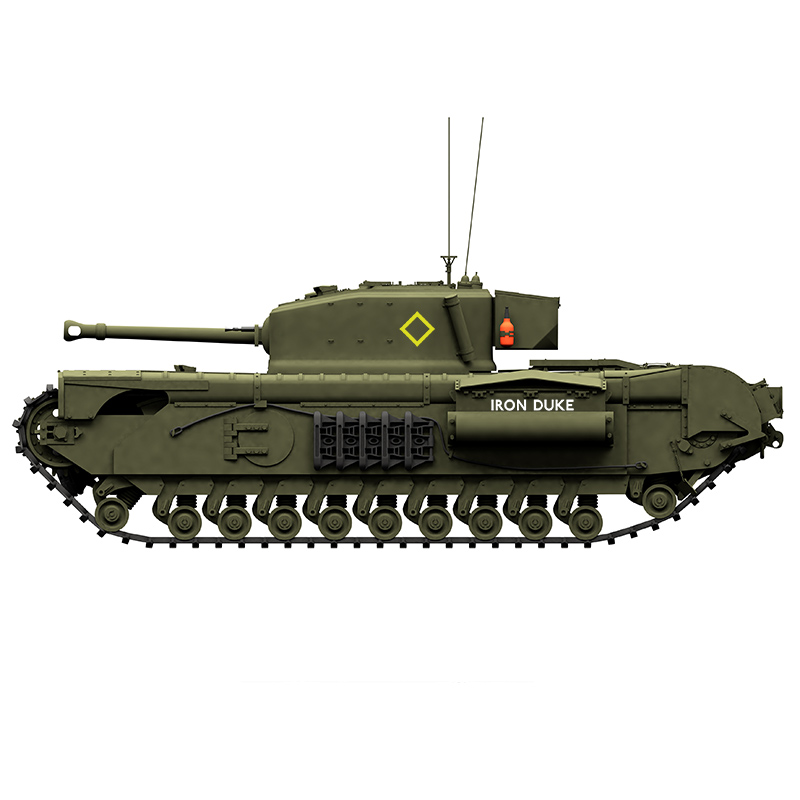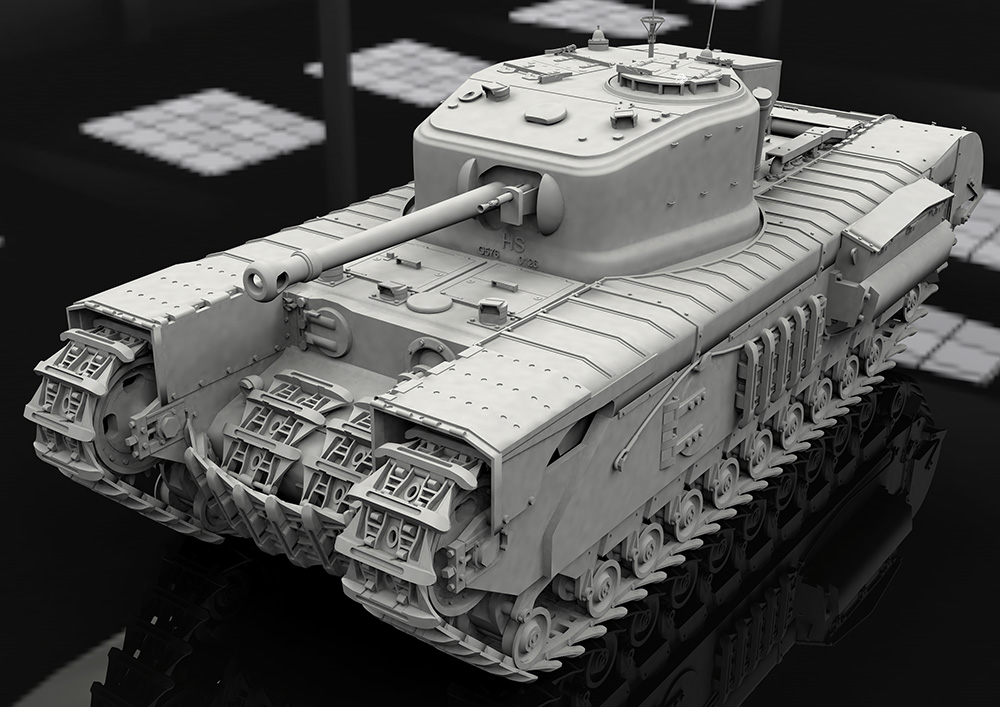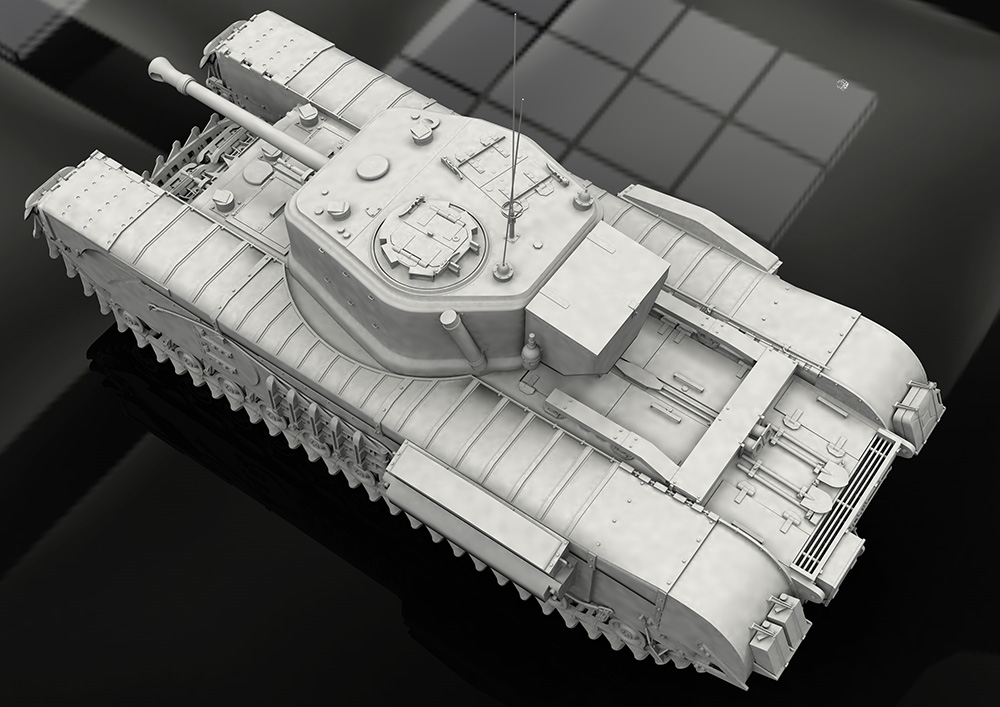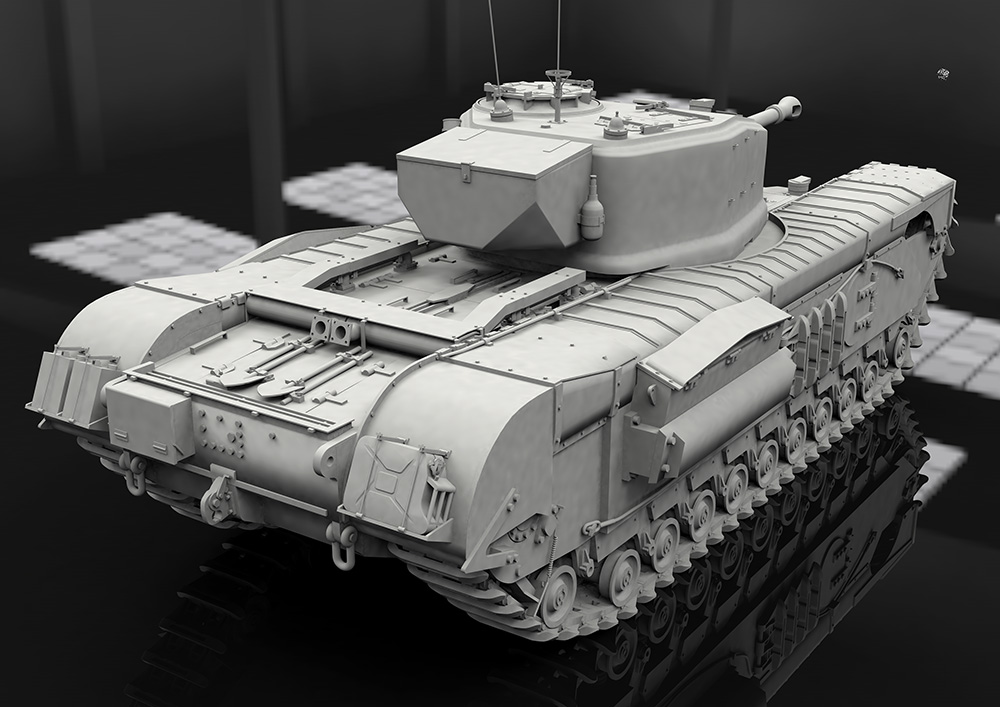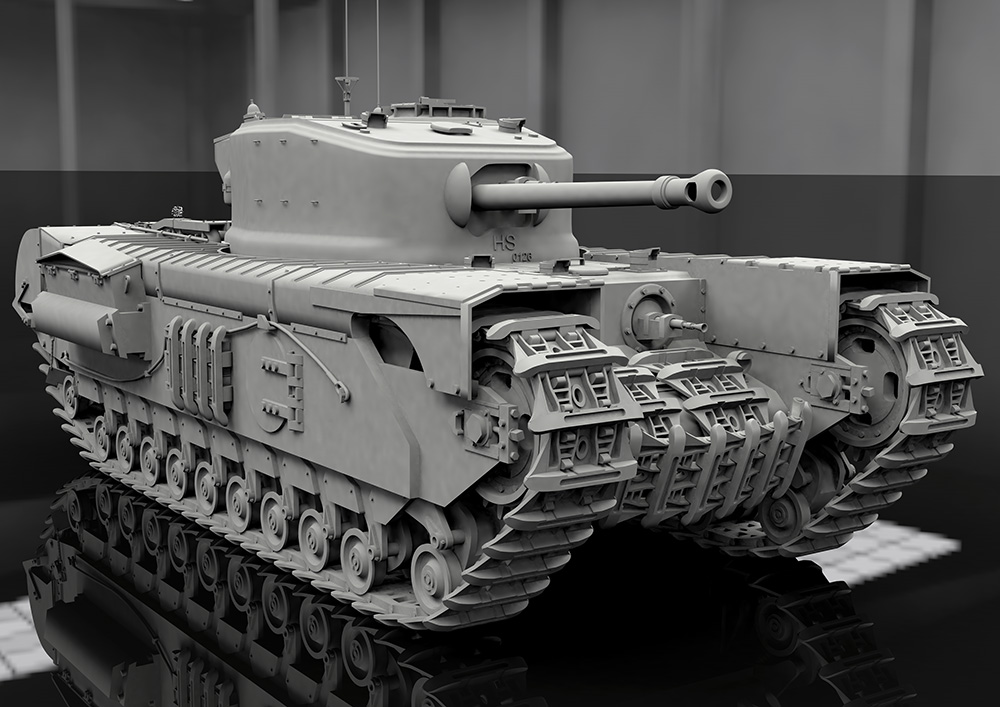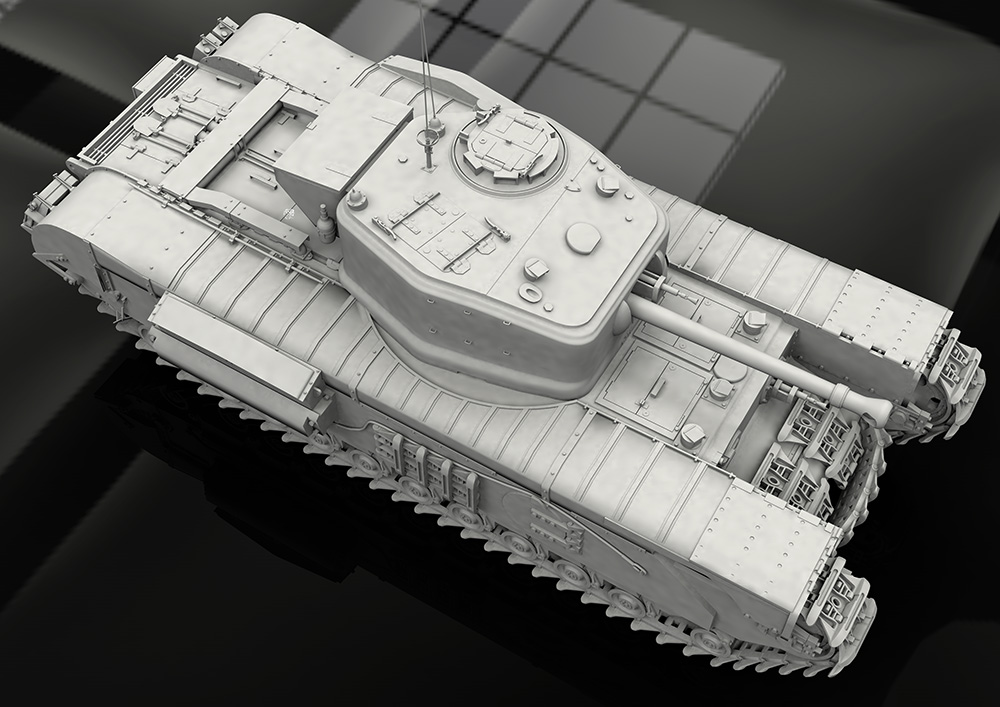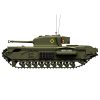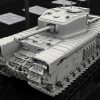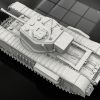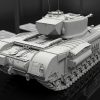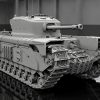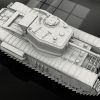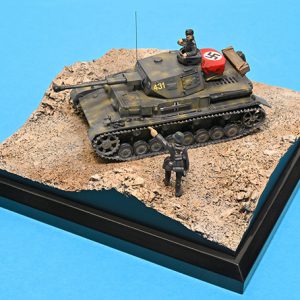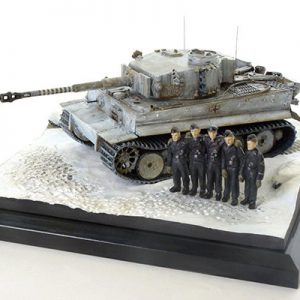Churchill MK VII
‘IRON DUKE’ T341211
Lt Col P.N. Veale DSO MC
9th Royal Tank Regiment 34th Tank Brigade
Reichswald Forest, February 1945.
The A20 design was a pre-war General Staff specification, intended to be a replacement for both the Matilda and the recent Valentine tanks. It still incorporated typical trench-warfare features with a slow (infantry pace) it was heavily protected with an armament only suitable to deal with fortifications, crushing barb wire in the process. The tracks had to be long enough to allow large trench crossings, including anti-tank ditches.
The evolution of this design became known as the A22 and was given the name ‘Churchill’. According to Churchill himself- the name honoured the memory of his 17th century ancestor, Sir John Churchill, 1st Duke of Marlborough. Although it could also have commemorated the instrumental leadership of Sir Winston Churchill, then First Lord of the Admiralty, and the head of the “Landship Committee”, the initiator of British tank development during the Great War.
Many aspects of the design of the Churchill referred back to the WWI tanks. The drive sprockets were at the rear, and idler at the front. At first, the upper tracks were left completely unprotected, like the typical WWI “lozenge” tanks. But this was changed in 1942 and the upper tracks were entirely covered by “catwalks”, while the ends received massive mudguards. This WWI appearance owed to the hull being significantly shorter than the tracks, which protruded a good 40 in (1.2 m) to the front. This was done with cratered terrain and deep trenches in mind. The mudguards were often removed from the tanks in theatre. One reason was that mud would get clogged up inside them and cause them to be ripped off. Another reason was that the blast from the gun distorted them or blew them clean off.
The Churchill was powered by the Bedford ‘Flat Twelve’ engine. This was effectively two engines 6 cylinder engines joined in horizontally opposed configuration on a common crankshaft. The 1,296 cu in (21.238 L) capacity powerplant was rated at 350 bhp at 2,000 rpm, delivering 960 lb ft (1,300 N⋅m) torque from 800 to 1,600 rpm.
One of the Churchill’s greatest asset was its armour protection. By the time the Mark VII was operational in 1943, the frontal armour had reached a staggering 6 in (152 mm), while the minimal thickness (bottom) was raised to 0.98 in (25 mm), with sides up to 102 mm (4 in). Only the Tiger II and Jagdtiger surpassed it. The only problem was that the armour was vertical, losing efficiency compared to a sloped one. Nevertheless, this protection gave tremendous confidence to the crews.
The Churchill Mk VII was the last significant evolution of the type. It’s turret was partly cast and welded, asymmetric, and lengthened at the rear, to house a bigger 75 mm (2.95 in) gun. The internal mantlet was housing, the main gun, the coaxial Besa and the gunner optics. Two deflector bulges were welded on each side of this opening, to deflect incoming rounds.
With the successful invasion of Normandy in summer 1944 the allied forces slowly began the push east towards Germany. Operation Veritable (also known as the Battle of the Reichswald) was the northern part of an Allied pincer movement that took place between 8 February and 11 March 1945 during the final stages of the Second World War. The operation was conducted by Field Marshal Bernard Montgomery’s Anglo-Canadian 21st Army Group, primarily consisting of the First Canadian Army under Lieutenant-General Harry Crerar and the British XXX Corps under Lieutenant-General Brian Horrocks.
Operation Veritable began on 8 February 1945, at 10:30 five infantry divisions, 50,000 men with 500 tanks, attacked in line – respectively from the north, the 3rd and 2nd Canadian, the 15th (Scottish) in the centre and the 53rd (Welsh) and 51st (Highland) on the right. The next day the Germans released water from the largest Roer dam, sending water surging down the valley, and irreparably jammed the sluices to ensure a steady flow for many days. The next day they added to the flooding by doing the same to dams further upstream on the Roer and the Urft. The river rose at two feet an hour and the valley downstream to the Maas stayed flooded for about two weeks.
The 3rd Division used Buffalo amphibious vehicles to move through the flooded areas; the water rendered the German field defences and minefields ineffective and isolated their units on islands where they could be picked off, one by one. XXX Corps had rehearsed forest warfare tactics and were able to bring armour forward with them, despite a high rate of damage due to the natural conditions combined with the age of the tanks. The German defences had not anticipated such tactics, so these tanks, including Churchill Crocodile flame-throwers, had a great shock value.
Tanks lost were harvested for parts and spare track was applied as standard to many areas providing additional armour protection. One such tank a Churchill Mk VII T341211, named ‘IRON DUKE’, was commanded by Lt Col P.N. Veale.
Lieutenant Colonel Veale commanded the 9th Royal Tank Regiment and provided critical support to the 1st Canadian Army, as indicated in the parts of Veale’s citation for the Distinguished Service Order (DSO), which are provided below:
“During four arduous days and four nights of almost continuous fighting which with extremely difficult going, reduced the effective strength of his regiment from 50 odd to less than 20 battle-worthy tanks, this CO never failed to support the infantry under the most trying and exhausting conditions of atrocious weather and morass of mud.
In particular on night 8/9 Feb his Regiment supported the infantry in a night attack of 6000 yards through the forest, an unorthodox and extremely difficult and dangerous operation for tanks, which nevertheless was entirely successful.
Had it not been for his enthusiasm, drive and complete disregard for his personal safety during these four days and nights of almost continuous fighting, the tank support afforded to the infantry, to which they give the most generous praise, could never have been achieved. His judgement and inspiring grip of all ranks down to individual fighting crews in his Regiment contributed enormously to the success of a very difficult operation. Throughout the whole period under review this officer has displayed the same qualities of leadership and outstanding personal example and I have no hesitation whatever in strongly advocating the immediate award of the DSO to this very gallant officer.”


